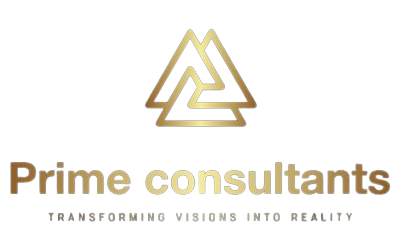


Conduct meetings with stakeholders to understand project goals, deliverables, and constraints.
Define the Work Breakdown Structure (WBS) for detailed cost tracking.
Collect historical data and industry benchmarks for material, labor, and equipment costs.
Identify project-specific assumptions, exclusions, and constraints.

Select appropriate estimating techniques (analogous, parametric, bottom-up).
Estimate costs for all activities, resources, and deliverables.
Break down estimates by phases or milestones for better clarity.
Validate estimates against historical data and market trends.
Aggregate all cost components into a comprehensive project budget.
Allocate budgets across project phases, departments, and timelines.
Establish a time-phased cost baseline linked with the project schedule.
Include contingency and escalation allowances where necessary.
Integrate cost data with the project schedule using cost-loaded scheduling tools.
Identify high-risk cost areas and perform cost risk analysis (e.g., Monte Carlo simulations).
Define and apply contingency reserves and management reserves.
Track cost against time using Earned Value Management (EVM) metrics.
Prepare detailed cost estimation and budgeting reports with assumptions and justifications.
Create dashboards and summary visuals for executive-level communication.
Conduct regular review meetings and adjust forecasts based on project performance.
Provide recommendations and ongoing advisory support for cost control and optimization.
Conduct kickoff meetings with stakeholders to understand the overall project objectives.
Review project charter, scope statement, and key deliverables.
Identify high-level phases, milestones, and deliverables for decomposition.
Define the level of detail required in the WBS based on project size and complexity.
Determine WBS structure approach (e.g., deliverable-based, phase-based, or hybrid).
Decide on the number of levels and coding system for WBS elements.
Define control accounts and planning packages for cost and schedule integration.
Align the WBS with project scope, budget, and resource allocation plans.

Break down project deliverables into manageable work packages and tasks.
Ensure 100% Rule compliance (total scope is covered with no overlap).
Validate logical hierarchy and relationships between parent-child elements.
Assign responsibility for each work package (RACI or Responsibility Matrix).
Integrate WBS with project scheduling tools (e.g., MS Project, Primavera).
Align WBS with cost estimation, budgeting, procurement, and resource planning systems.
Tag WBS elements to cost codes and schedule activities for full traceability.
Ensure WBS supports Earned Value Management (EVM) and performance tracking.
Conduct review sessions with stakeholders and project managers for feedback.
Revise and finalize the WBS based on input and risk identification.
Prepare supporting documentation, including WBS dictionary and structure charts.
Deliver final WBS package with version control, user guide, and advisory support.
(Material, human resource, Equipment)
Conduct consultations with clients to understand project goals, deliverables, and timelines.
Review project scope, schedule, and work breakdown structure (WBS).
Identify resource needs for each work package or task.
Define resource categories: material, manpower, and equipment.
Develop a detailed list of required materials based on project specifications.
Quantify material requirements per activity or phase using quantity take-off and BOMs.
Identify procurement lead times, suppliers, delivery schedules, and storage needs.
Plan for alternative materials in case of delays, unavailability, or cost fluctuations.

Define roles, responsibilities, and required skillsets for each task or phase.
Estimate manpower needs based on productivity norms and schedule duration.
Develop a manpower histogram showing workforce allocation over time.
Coordinate recruitment or outsourcing plans and ensure compliance with labor laws.
Identify required equipment, machinery, and tools for each project phase.
Determine equipment usage duration, availability, and allocation strategy (owned vs. rental).
Plan for equipment logistics, operation schedules, and maintenance cycles.
Develop cost estimates for equipment procurement or leasing.
Align resource plans with cost estimates and project schedule.
Identify potential bottlenecks or resource conflicts and propose mitigation strategies.
Develop resource utilization reports and optimization plans (lean usage, shifts).
Implement a monitoring system for real-time tracking of resource consumption and productivity.
Conduct initial meetings with stakeholders to understand project scope and financial goals.
Review project charter, scope statement, and WBS to identify cost elements.
Define budget structure: cost categories, chart of accounts, and funding sources.
Establish budgeting guidelines, assumptions, and constraints.
Gather and analyze historical cost data, benchmarks, and market trends.
Identify and classify direct and indirect costs across all project components.
Consult with suppliers, vendors, and contractors for updated pricing.
Incorporate inflation, location factors, and foreign exchange impacts (if applicable).

Prepare detailed cost estimates for all project activities, resources, and deliverables.
Consolidate estimates into an integrated project budget.
Allocate budget to project phases, departments, or cost centers.
Establish contingency reserves and management reserves based on risk analysis.
Integrate the approved budget with the project schedule (time-phased budgeting).
Link budget elements to cost codes and project control systems.
Set up cost control tools like Earned Value Management (EVM) for performance tracking.
Define budget change control procedures and approval workflows.
Prepare comprehensive project budgeting reports with visual breakdowns.
Facilitate budget review sessions with clients and make necessary revisions.
Deliver finalized budget documents, cost breakdown structures, and financial dashboards.
Provide ongoing advisory support for budget monitoring and forecasting during execution.
Conduct meetings with clients and stakeholders to understand project objectives, deliverables, and constraints.
Review project documentation including scope statement, drawings, specifications, and WBS.
Identify estimation objectives (conceptual, budgetary, or definitive).
Establish assumptions, exclusions, and estimation boundaries.
Gather relevant historical data, industry benchmarks, and vendor pricing.
Identify key cost drivers such as labor, materials, equipment, and logistics.
Analyze market trends, location factors, escalation, and contingencies.
Assess productivity norms, resource availability, and environmental factors.

Select appropriate estimation techniques (analogous, parametric, bottom-up, three-point estimates).
Break down project into components or packages for detailed estimation.
Utilize estimation software/tools (e.g., CostX, MS Excel, Primavera, etc.).
Include allowances for risks, waste, and scope variations where needed.
Compile all estimated costs into a structured and traceable format.
Cross-verify estimates through expert reviews and benchmarking.
Apply contingency and escalation based on risk analysis and project timeline.
Document estimation logic, formulas, sources, and assumptions clearly.
Prepare a detailed project estimation report including cost breakdowns, summary sheets, and graphical representations.
Present the estimate to stakeholders and address queries or revisions.
Support clients in budget setting, tender preparation, and financial planning.
Offer ongoing consultation throughout the pre-construction or pre-execution phase for estimate updates.
Define the billing process aligned with the project contract and scope of work.
Establish billing schedules, milestones, and payment terms.
Identify types of billings (progress billing, milestone billing, fixed price, time & material).
Develop templates and formats for invoices and billing documentation.
WhatsApp us